-
-
3/1/2007
zobraz celý textSylva Francová / Portréty žen

Dům umění v Opavě a Institut tvůrčí fotografie FPF Slezské univerzity v Opavě Vás srdečně zvou na zahájení výstavy
Sylva Francová / Portréty ženv úterý 9. ledna 2007 v 17 hodin v Kabinetu fotografie Domu umění v Opavě. Výstava se uskutečňuje za finanční podpory Statutárního města Opavy a potrvá do 11. 2. 2007. Otevřeno od úterý do neděle 10-17 hodin.
Dům umění, Pekařská 12, Opava, tel. 553 712 231, e-mail: bludny.kamen@opava.cz http://www.sca-art.cz/duopava, www.itf.cz -
3/1/2007
zobraz celý textDiplomové práce ITF
Kabinet fotografie Domu umění v Opavě, 28. listopadu – 30. prosince 2006
Je již dlouholetým nepsaným pravidlem, že Institut tvůrčí fotografie Filozoficko-přírodovědecké fakulty Slezské univerzity v Opavě každoročně představuje diplomové práce svých čerstvých absolventů ve svém mateřském městě. Také letos předkládáme veřejnosti práce deseti studentů, kteří své volné bakalářské soubory obhájili letos v září. Tentokrát je ale situace výjimečná tím, že prezentujeme jen to „nejčerstvější zboží“, kdežto ty z letošních prací, které byly obhájeny již v lednu nebo v červnu, byly představeny v opavském Domě umění už v létě na rozsáhlé výstavě Absolventi. Tou Institut tvůrčí fotografie představil závěrečnými soubory svých nejlepších studentů za patnáctiletou historii školy. Mnohé z těchto snímků byly také k vidění na výstavě Institutu tvůrčí fotografie v Pražském domu fotografie v rámci projektu Šestka, kdy se během letošního podzimu a zimy postupně představují jednotlivé české vysoké fotografické školy. Nynější výstava tedy představuje opravdu tu nejčerstvější úrodu, práce, které jsou uvedeny vůbec poprvé.
-
30/12/2006
zobraz celý textMonth of Photography in Paris and Paris Photo 2006

Paris Photo 2006
The Month of Photography in Paris was formerly the world’s largest and the most important photography festival, whose program regularly featured essential exhibitions, often setting milestones in presentation of both older and contemporary photography. In the last ten years it has been somewhat overshadowed by the Paris Photo fair. Even so, every other autumn, the rich cultural life of the French capital is further enriched by a number of excellent photography exhibitions. Last November, an official program of 64 exhibitions appeared in various museums, galleries, foreign cultural centers and town halls. This time the program focused above all on photography in print media.
The revelations included an exhibition in the Maison Européenne de la Photographie, showing the use of photography in the illustrated magazine Vu during the years 1928-1940. The magazine played a similar role in the evolution of modern French photojournalism as its German counterparts, the Berliner Illustrierte Zeitung and Műnchner Illustrierte Presse. Outstanding in terms of its structure, the exhibition used authentic pages of the magazine divided in sections by themes, presenting a generous space for the display of various visual essays on everyday life, sports, culture, dramatic images from various wars (it was Vu magazine, for instance, which first published Capa’s famous photograph Falling Soldier), photographs of celebrities as well as images warning of the advance of the Nazi movement in Germany. The exhibition The Odyssey of an Icon: Three Photographs by André Kertész was a curator’s dream, showing a number of variations of the triad of famous works by the Hungarian legend of modern photography as well as dozens of the various books, catalogues and magazines in which they were published. Both well-known and obscure works featured in the exhibition of Soviet photomontage, focusing on the theme of the Army from the period between 1917-1953. The exhibition traced the gradual degeneration of avant-garde Constructivist art into dull agit-prop in the style of Socialist Realism. Another type of aggressive political photomontage, directed chiefly against Hitler’s regime were the works of John Heartfield, many of them created during his 5-year-long exile in Czechoslovakia. The Bibliothèque Nationale hosted an exhibition of the golden era of photojournalism from the 1940s to the 1960s – entitled Humanist Photography – which included optimistic images with a clear composition, perhaps slightly archaic today, by Izis, Boubat, Doisneau, Ronis, and other French photojournalists of the time. The anniversary of the Budapest anti-Communist uprising of 1956 was commemorated with a presentation of the images of the Austrian photo-reporter Erich Lessing; alongside the display in Paris, they were also presented at a number of other photography festivals last year. Among the real revelations was the exhibition of the photographic scrapbooks of Henri Cartier-Bresson, which featured a number of little-known works. More recent developments of press photography were shown in an excellent and extensive exhibition Things as They Are, put together by Christian Caujolle from both original photographs and their reproductions in a plethora of magazines. This imaginative exhibition, tracking the major political and public events of several decades and their reflection in photography, convincingly showed the tremendous transformations that photojournalism has undergone in the last fifty years, abandoning certain positions due to the massive spread of television reportage while discovering a new niche in the form of exhibitions and books instead. The retrospective of French advertising photography from Man Ray to Jean-Paul Goude was presented at the Musée des Arts Décoratifs.
-
30/12/2006
zobraz celý textMěsíc fotografie v Bratislavě 2006

Měsíc fotografie v Bratislavě - Jindřich Štreit na zahajovací recepci
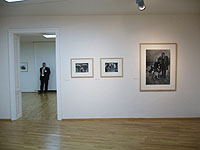
Výstava Jindřicha Štreita ve Slovenské národní galerii
Bratislavský Měsíc fotografie probíhal v listopadu 2006 už po šestnácté. Ze skromných začátků se stal jedním z předních fotografických festivalů, což loni potvrdilo i jeho zařazení do Evropského měsíce fotografie spolu s festivaly v Paříži, Vídni, Berlíně, Lucemburku, Římě a Moskvě. Novinkou byla i sekce „Na východ od východu“, zaměřená na fotografie z Koreje a Číny. Jinak však šlo o standardní ročník festivalu, jaký u nás bohužel stále ještě nemáme.
Jestliže v minulých ročnících největší zájem diváků přitahovaly výstavy slavných osobností světové fotografie Michalse, Salgada, Kleina, Cartiera-Bressona, Leibovitzové, Witkina nebo Nachtweye, tentokrát největší nadšení vzbuzovala retrospektiva Jindřicha Štreita ve dvou podlažích Slovenské národní galerie. Byla zdaleka největší z neuvěřitelného množství více 600 výstav, jimiž se tento přední český dokumentarista dosud prezentoval. A byla také z nich nejkvalitnější. Štreit touto expozicí, premiérově uvedenou v menším rozsahu na jaře v Ostravě, oslavil své šedesátiny. Výběr snímků na výstavu i pro doprovodnou knihu z nakladatelství Kant však tentokrát neudělal sám, ale svěřil ho Tomáši Pospěchovi. Bylo to dobré rozhodnutí, protože Pospěch se nebál nerespektovat chronologickou posloupnost cyklů či eliminovat podružnější práce. Vybral tak - a v mnohdy překvapivých souvislostech představil - skutečně nejlepší díla, byť některá z nich do té doby existovala jenom v negativech. Především syrové a přitom vizuálně silné snímky z každodenního života vesničanů na Rýmařovsku a Bruntálsku, v nichž Štreit mistrovsky propojil obraz konkrétní skupiny lidí v určitém prostředí a čase se zobecňujícími nadčasovými hodnotami. V Bratislavě se to povedlo ještě více než na jarní premiéře výstavy v poněkud stísněných prostorách ostravské galerie, kde některé obří zvětšeniny neměly dostatečný prostor. Expozice tak skvěle představila nejenom ohromný rozsah, ale i mimořádnou kvalitu a historický, sociologický i filozofický
význam Štreitova díla. -
30/12/2006
zobraz celý textMonth of Photography in Bratislava 2006
Bratislava’s festival of photography can be described either in terms of superlatives or unflatteringly – depending on perspective. Some regular visitors fail to see how it is possible, in spite of all the critical responses, that the organizers were unable to avoid unnecessary mistakes in the festival’s sixteenth year, which took place in November 2006. These included the all too often shoddy installation of the exhibitions, missing captions, and major exhibitions again opening in the first half of the opening week, when most foreign visitors still had not made it to Bratislava (from Czech photography schools alone over two hundred students and lecturers visit regularly), or the still non-existing accreditation for exhibiting artists, portfolio reviewers, festival guests and journalists, who once again had to go through the humiliation of having to plead for free entrance to exhibitions and other events. On the other hand it is clear that the Bratislava Month of Photography has come a long way since its humble beginnings, and today has earned its irreplaceable niche among other photography festivals (a fact confirmed by its inclusion in the European Month of Photography, together with the festivals in Paris, Berlin, Moscow, Rome and Luxembourg). A small group of organizers, with Václav Macek at their head, managed to compile a festival accentuating Central and Eastern European photography, which is also accompanied each year by several exhibitions of foremost photographers from other parts of the world. The festival program has grown over the years to the current number of circa 35 exhibitions; in addition to those there is today also a well-organized portfolio review (with the participation of prominent photographers, critics and curators), several workshops, lectures, a photo-book competition, and even a concert of new compositions by Slovak musicians inspired by various photographs. The Fotofoto Foundation that holds the festival managed to publish a number of books and catalogues, and in 2005 they opened the Central European House of Photography. Already for eleven years they have been issuing Imago magazine in English. The organizers have also gradually managed to eliminate the most serious mistakes in the festival production: most exhibitions were open also during the opening weekend, the extensive Slovak-English catalogue came out on time, all of the exhibition pieces were hung on the walls or panels, and none were found lying on the floor, as happened in 2005.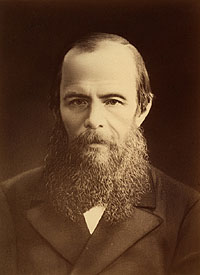
Konstantin Shapiro, F. M. Dostoyevsky, 1879
-
30/12/2006
zobraz celý textPhotokina and the International Photo Scene in Cologne
As early as the 1950s and 1960s, well before the emergence of the first festival of photography in Arles, there existed a regularly held event presenting many exhibitions of images from historical and contemporary photography – the culture program of Photokina, the world’s largest film and photography fair in Cologne. The fact that since its inception Photokina did not merely present innovations in film and photo technology but also actual photographic work was in large part due to the recently deceased German collector and historian of photography, L. Fritz Gruber, who for many years organized for the fair, both directly at the main site and in Cologne’s numerous museums and galleries, thematic as well as artist-oriented exhibition of the foremost photographers. After he retired, the cultural program of Photokina experienced once more a heyday during the time when Karl Steinorth was closely involved – the curator of a number of major exhibitions and author of many books on the history of photography. Photokina Cologne thus regularly saw retrospectives of Alfred Stieglitz, Alvin Langdon Coburn, Edward Steichen, Richard Avedon, Helmut Newton, William Klein, and other famous photographers, richly sponsored by Kodak and Agfa.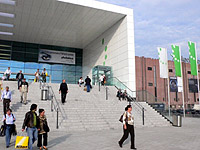
Photokina, Cologne
-
14/12/2006
zobraz celý textLANUGO
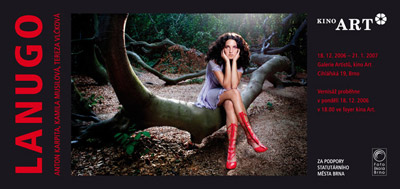
LANUGO
Anton Karpita
Kamila Musilová
Tereza Vlčková
18. 12. - 21. 1. 2007
Vernisáž 18. 12. v 18.00Galerie Artistů ve foyer kina Art
Cihlářská 19, BrnoLanugo je odborný název pro jemné ochmýření těla novorozence. Přeneseně řečeno je to jakýsi začátek, z něhož se něco vyvíjí a vyrůstá. Vata chránící křehké. Fotografie tří autorů, Antona Karpity, Kamily Musilové a Terezy Vlčkové jsou s těmito významy úzce spjaty. Tvůrci, studenti Univerzity Tomáše Bati - oboru reklamní fotografie, jsou stále ještě hledači. Spojuje je však snaha o nalezení nových přístupů k médiu módní fotografie. Jsou znuděni banálními časopisovými fashion story a snaží se ukázat obrovské možnosti, které tento tradiční žánr skýtá. Jednoduché, esteticky "vycizelované" fotografie Antona Karpity, snová atmosféra na hranici krásy a kýče ve snímcích Terezy Vlčkové či scény postavené na základě příběhů od Kamily Musilové jsou příslibem něčeho nového.
-
5/12/2006
zobraz celý textThe Nude in Czech Photography 1960-2000
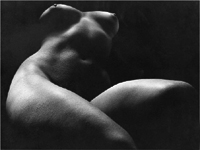 The nude is one of the most beloved and most frequent kinds of Czech photography, and many of its artists like František Drtikol, Karel Ludwig or Jan Saudek are among the most important and most popular Czech photographers. Although after 1960 there have been several periods which were not favorable to photographic nudes in Czechoslovakia, for various reasons, there were not any when high quality nudes were not made at all. The worst period of dogmatic totalitarianism ended with Stalin's death in 1953, but it took several more years before the cultural scene showed distinct signs of liberalization in Czechoslovakia. Photographers adopted a number of specialized techniques, including point-source studio lighting, sandwich montages with details of various structure, projections of various rasters on the models' bodies, the Sabattier effect, coarse grain, and "rollage." Such stylized works by Miroslav Hák and Karel Ludwig were loosely emulated by other artists. In 1960, Václav Chochola made several classical studio nudes, emphasizing the models' natural beauty without distinctive stylization, but in that same year, he and the artist Jiří Kolář employed these very photographs in a series of "rollages" and "prollages". Stylization through sharp light contrasts and effective details were often used in nudes to accent basic archetypes, simple shapes and proportionality. Miloslav Stibor in the 1960s became one of the most important international Czech photographers of nudes. In 1968, following his earlier creatively finished, technically precise but somewhat cold nudes, Stibor presented a surprising series entitled 15 Photographs for Henry Miller /see photo/. These sensual photographs featuring cropped details of female bodies are undoubtedly the peak of his work, and perhaps even one of the best works of Czech nude photography in the 1960s. Dramatically lit and stepping out of the darkness almost like phantoms, these eroticized nudes allow for a certain degree of naturalism rather than stylized finish. Sandwich montages and projections of rasters, or light-filtered patterns, were most often used in nudes by Jaroslav Vávra and Zdeněk Virt.
The nude is one of the most beloved and most frequent kinds of Czech photography, and many of its artists like František Drtikol, Karel Ludwig or Jan Saudek are among the most important and most popular Czech photographers. Although after 1960 there have been several periods which were not favorable to photographic nudes in Czechoslovakia, for various reasons, there were not any when high quality nudes were not made at all. The worst period of dogmatic totalitarianism ended with Stalin's death in 1953, but it took several more years before the cultural scene showed distinct signs of liberalization in Czechoslovakia. Photographers adopted a number of specialized techniques, including point-source studio lighting, sandwich montages with details of various structure, projections of various rasters on the models' bodies, the Sabattier effect, coarse grain, and "rollage." Such stylized works by Miroslav Hák and Karel Ludwig were loosely emulated by other artists. In 1960, Václav Chochola made several classical studio nudes, emphasizing the models' natural beauty without distinctive stylization, but in that same year, he and the artist Jiří Kolář employed these very photographs in a series of "rollages" and "prollages". Stylization through sharp light contrasts and effective details were often used in nudes to accent basic archetypes, simple shapes and proportionality. Miloslav Stibor in the 1960s became one of the most important international Czech photographers of nudes. In 1968, following his earlier creatively finished, technically precise but somewhat cold nudes, Stibor presented a surprising series entitled 15 Photographs for Henry Miller /see photo/. These sensual photographs featuring cropped details of female bodies are undoubtedly the peak of his work, and perhaps even one of the best works of Czech nude photography in the 1960s. Dramatically lit and stepping out of the darkness almost like phantoms, these eroticized nudes allow for a certain degree of naturalism rather than stylized finish. Sandwich montages and projections of rasters, or light-filtered patterns, were most often used in nudes by Jaroslav Vávra and Zdeněk Virt.



